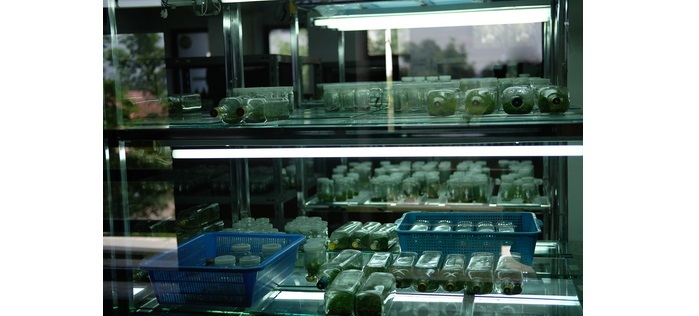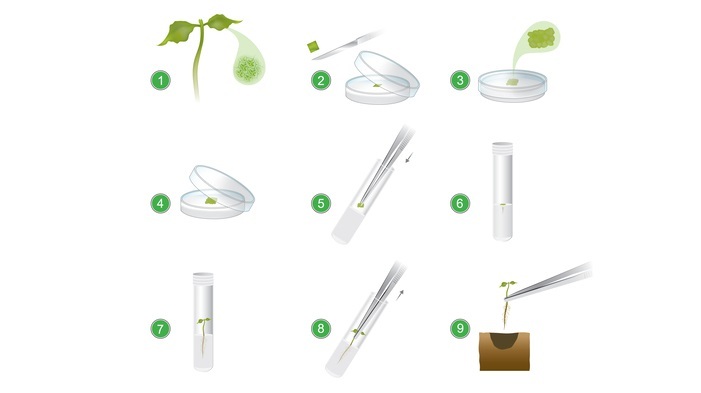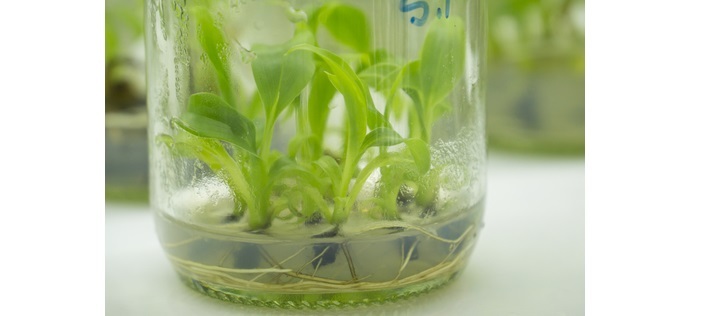
 Data Structure
Data Structure Networking
Networking RDBMS
RDBMS Operating System
Operating System Java
Java MS Excel
MS Excel iOS
iOS HTML
HTML CSS
CSS Android
Android Python
Python C Programming
C Programming C++
C++ C#
C# MongoDB
MongoDB MySQL
MySQL Javascript
Javascript PHP
PHP
- Selected Reading
- UPSC IAS Exams Notes
- Developer's Best Practices
- Questions and Answers
- Effective Resume Writing
- HR Interview Questions
- Computer Glossary
- Who is Who
History of Plant Cell and Tissue Culture
Tissue Culture
Tissue fragments from animals or plants are transplanted to an artificial environment where they can continue to thrive and function as part of the biological research technique known as tissue culture. One cell, a group of cells, an entire organ, or a portion of an organ may make up the cultured tissue. In culture, cells can divide, alter their shape, size, or function, engage in specialised activity or collaborate with other cells.

Introduction to Culture Media
Biological culture media, such as blood serum or tissue extract, chemically defined synthetic media, or a combination of the two may be used to grow cells. A medium must be adequately acidic or alkaline and must have the correct ratios of the nutrients required for the cells being examined. Typically, cultures are produced either as a suspension in a liquid or semisolid medium, or as single cell layers on a glass or plastic surface.
A minute amount of the tissue is scattered on or in the medium to start a culture. The flask, tube, or a plate containing the culture is then incubated, often at a temperature close to the tissue's natural habitat.
To avoid microbial contamination, sterile conditions are maintained. Sometimes single cells are used to establish cultures, producing clones, which are uniform biological populations. Colonies usually form within 10 to 14 days of being placed under growth conditions for single cells.
History of Tissue Culture
It all started in 1832 when Theodor Schwann made the absurd claim that, with the right external circumstances, cells might be grown outside of their original host body. For the tissue culture to grow, these outside factors would need to produce a sterile environment.
Three years after making this obviously absurd claim, a man by the name of Wilhelm Roux in 1835 established the hypothesis. Roux used salt solution as his culture medium and was successful in growing chicken embryonic cells.
Another man by the name of Reichinger put up the initial parameter for this ground-breaking technique four more years later, in 1839. After this development, the tissue culture approach saw few to no notable citations for approximately 50 years. A scientist noticed the development of salamander leucocyte cells in an artificial environment in 1885. Another scholar made the same observation in 1903 as well.
You may be familiar with the Father of Tissue Culture. An American naturalist named Ross Granville Harrison succeeded in cultivating frog nerve cells in solidified lymph in 1907. Harrison has earned the title of Father as a result of his contributions to the tissue culture technique.
Although tissue culture has been practised since the early 18th century, plant tissue culture did not start to take off until 1898. German botanist Gottlieb Haberlandt pioneered the use of the in vitro method to develop plant tissues. He used a variety of cells, including palisade tissues.
B-vitamins and auxin (IAA) were found to be essential for the tissue culture method of generating root cultures in the 1930s. Similar trials were carried out repeatedly throughout the next century, and scientists started to determine the most crucial factors that ought to govern our current tissue culture procedure.

Processing of Tissue Culture Cells
Living cultures can be viewed either directly under a microscope or through still and moving images captured through the microscope.
For further in-depth analysis, cells, tissues, and organs can also be destroyed, fixed (preserved), and dyed.
Samples can also be embedded and thinly sectioned after fixation in order to reveal more information when viewed under a light or electron microscope.
In tissue culture, cells are treated to a variety of experimental procedures. For instance, the culture may be supplemented with viruses, medications, hormones, vitamins, disease-causing bacteria, or substances that are suspected of causing cancer.
The next step is for scientists to study the cells, looking for broad changes in cell function or behavior as well as changes in specific components, like changes in the expression of a particular gene or protein.
Techniques Used for Plant Tissue Culture In-vitro
Plant tissue is prepared for tissue culture in an aseptic environment with HEPA filtered air supplied by a laminar flow cabinet. In a growing environment with regulated temperature and light intensity, the tissue is then cultured in sterile containers like Petri dishes or flasks.
Natural contamination of living plant materials from the environment with microbes demands their surfaces to be sterilized in chemical solutions (often alcohol and sodium or calcium hypochlorite) before acceptable samples (referred to as explants) are taken.
When cell suspension cultures are needed, the sterile explants are then typically positioned on top of a sterile solid culture medium, however this practice is occasionally used.
The shape of the tissues that develop from the initial explant is significantly influenced by the medium's composition, particularly the plant hormones and the nitrogen supply (nitrate as opposed to ammonium salts or amino acids).
For instance, an excess of auxin frequently causes the growth of roots, but an excess of cytokinin might produce shoots. A callus will frequently form when auxin and cytokinin levels are balanced, but the callus' appearance will depend on the type of plant being grown as well as the makeup of the medium.
Pieces of cultures are frequently cut off as they develop and sub-cultured onto fresh media to promote development or change the morphology of the culture.
When shoots begin to appear in a culture, they can be cut off, rooted with auxin, and then transplanted into potting soil for continued growth as regular plants in the greenhouse.

Applications of Plant Tissue Culture
A few of the applications include -
The practice of growing plants for commercial purposes in huge quantities using meristem and shoot culture for potting, landscape, and florist themes.
-
To protect rare or vulnerable plant species.
Instead of using plants, a plant breeder may utilize tissue culture to examine cells for beneficial traits like herbicide tolerance or resistance.
The large-scale cultivation of plant cells in liquid culture in bioreactors for the generation of useful substances, notably recombinant proteins used as biopharmaceuticals and secondary metabolites produced from plants.
To create a unique hybrid by fusing protoplasts from different species those are not closely related.
To quickly research the molecular underpinnings of plant physiological, biochemical, and reproductive mechanisms, such as in vitro selection of stress-tolerant plants.

